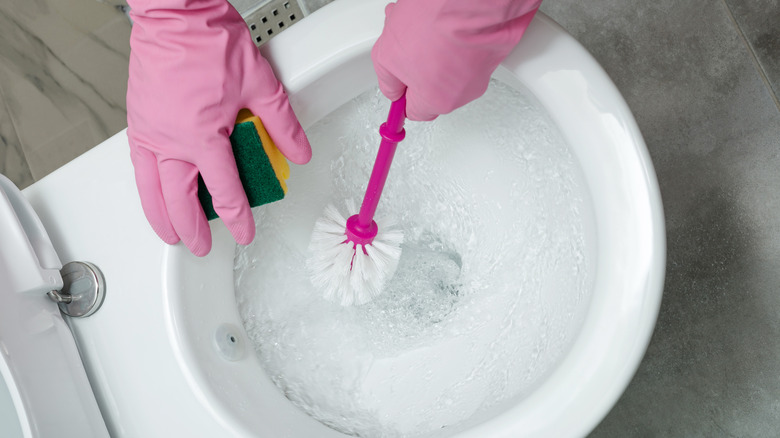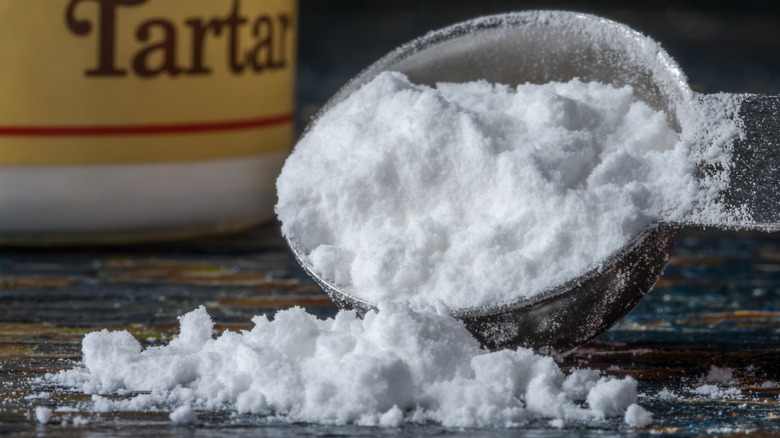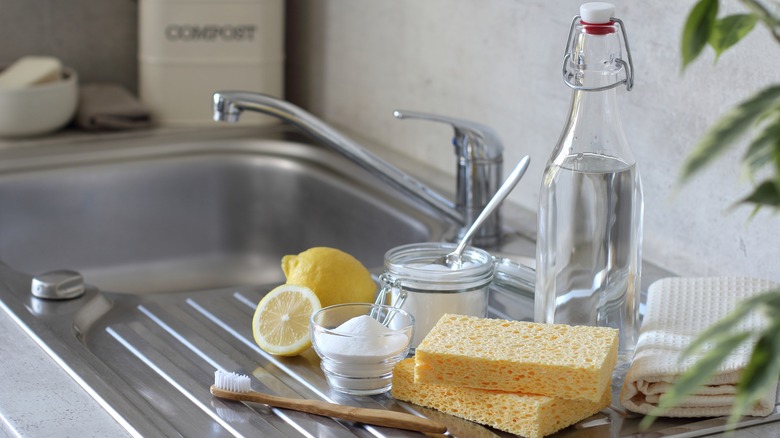Just Reach Inside Your Pantry For This Ingredient To Make Your Toilet Sparkle
Have you got a stubborn ring of limescale, rust, or general dinge around your toilet bowl? Instead of running to the cleaning aisle to remove these toilet bowl stains, take a look in your pantry. To avoid buying tons of expensive cleaning products that are filled with harsh, synthetic chemicals, we are always searching for pantry staples that can get tough cleaning jobs done, like removing that stubborn ring of buildup in your toilet. You've probably read countless articles that offer the numerous virtues of baking soda and white vinegar, but there's actually another heavyweight cleaning champion in your food cupboard — cream of tartar. This underrated baking ingredient is the key to making your toilet bowl shine like new.
Cream of tartar is an acidic salt (potassium acid tartrate), which means it has abrasive powers, similar to baking soda, and the ability to break down minerals, just like white vinegar. That means that it can tackle stains and residue on both a physical and chemical level. It's also safe to use on most surfaces including your toilet bowl because it comes in the form of a very fine powder, lending it enough grit to gently buff away buildup without damaging the finish of the ceramic or plastic bowl. To boot, it's inexpensive, non-toxic, and you probably already have some sitting in the pantry, making this an all-around winner for toilet cleaning. Here's how to use it effectively.
How to clean your toilet with cream of tartar
Instead of reaching for a fluorescent-colored toilet cleaning gel, grab some cream of tartar and sprinkle it around your toilet bowl. Let it sit for a moment so the acid of the cream of tartar can react with the alkaline mineral buildup or other stains. Then, just grab your toilet brush and start to gently scrub away any marks. You should be able to see a difference pretty quickly.
If you don't see a difference, or if the toilet bowl's staining is especially severe, you may need to repeat the process a few times. Further, while cream of tartar shouldn't cause discoloration, as with any new cleaning solution, try it on a small area first to ensure it won't cause issues. In general, this ingredient is gentle enough that it can be used on many surfaces, both non-porous and porous alike, as well as other porcelain fixtures in the bathroom such as sinks and bathtubs. If you discover that cream of tartar isn't effective enough to clean your toilet bowl on its own, there are some other ingredients you could combine with it.
Combining cream of tartar with other natural ingredients
While cream of tartar is acidic, it isn't as strong as other cleaning agents such as white vinegar. This can be a good thing because it means it's less harsh, but it also means it may not be as effective at disinfecting the toilet. You may need to combine cream of tartar with another ingredient to make it more effective. Because it's an acid, it can be used with acidic ingredients for even more cleaning power, unlike baking soda, which neutralizes acids.
Simply pour some hydrogen peroxide, white distilled vinegar, or lemon juice into the toilet and let it sit, then start to buff away at the bowl again. If you choose to combine cream of tartar with hydrogen peroxide or white vinegar, keep in mind that these ingredients can be extremely harsh on skin, eyes, and lungs. Therefore, you should only use these combinations when the bathroom fan is on or when the windows are open. Another downside of using white vinegar is that your toilet might be left with a strong sour smell. To avoid this, opt for lemon juice instead, which will leave behind a fresh, pleasant scent.


